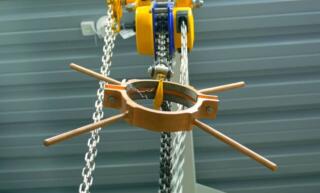
How To Determine Chain Capacity for Lifting
Ensuring your team has the right equipment is essential when creating a safe and efficient workspace for lifting heavy loads. You need to know the chain capacity before lifting. Find out how to determine chain capacity for lifting with this brief overview.
1. Understand Chain Grades
Lifting chains are classified into grades that determine each strength’s weight limit. The most common grades include the following:
- Grade 30 usually doesn’t get much use for lifting.
- Grade 43, also known as high-test chains, is common for towing and logging.
- Grade 70 is a transport chain for load binding.
- Grade 80 is an alloy chain for overhead lifting.
- Grade 100 is a high-strength alloy chain that is suitable for lifting.
Grade 80 and Grade 100 chains are the best for lifting because they consist of high-strength alloy steel. The reasons to use Grade 100 chain slings for heavy-duty lifting include their higher working load limits and increased durability compared to lower-grade chains.
2. Measure Chain Diameter Accurately
The chain’s diameter helps in determining its capacity. Chains come in various lengths, typically measured in inches or millimeters. A vernier caliper or chain gauge can help you determine the diameter. While using the vernier, measure at the widest point across the link, and don’t include deformations.
3. Calculate the Working Load Limit (WLL)
The working load limit (WLL) is the maximum load a chain can safely lift. To determine the WLL, you need to know the chain’s grade and diameter. Manufacturers provide tables and charts that list the WLL for different grades and diameters. For example, a Grade 80 chain with a diameter of 1/2 inch typically has a WLL of around 12,000 pounds. Refer to the tables to find the ideal chain length for lifting.
4. Incorporate a Safety Factor
Incorporate a safety factor for wear, shock loading, and other variables in lifting operations. Industry standards and regulations determine the safety factor. A common safety factor for lifting chains is 4:1. This means the chain’s breaking strength is four times the WLL. Always refer to industry guidelines to determine the appropriate safety factor for your application.
Know Your Chain Load Capacity
Determining the chain capacity for lifting involves understanding chain grades. Then, you can measure the diameter accurately and calculate the WLL. This essential guide will help you and your team become familiar with chain load capacity.






